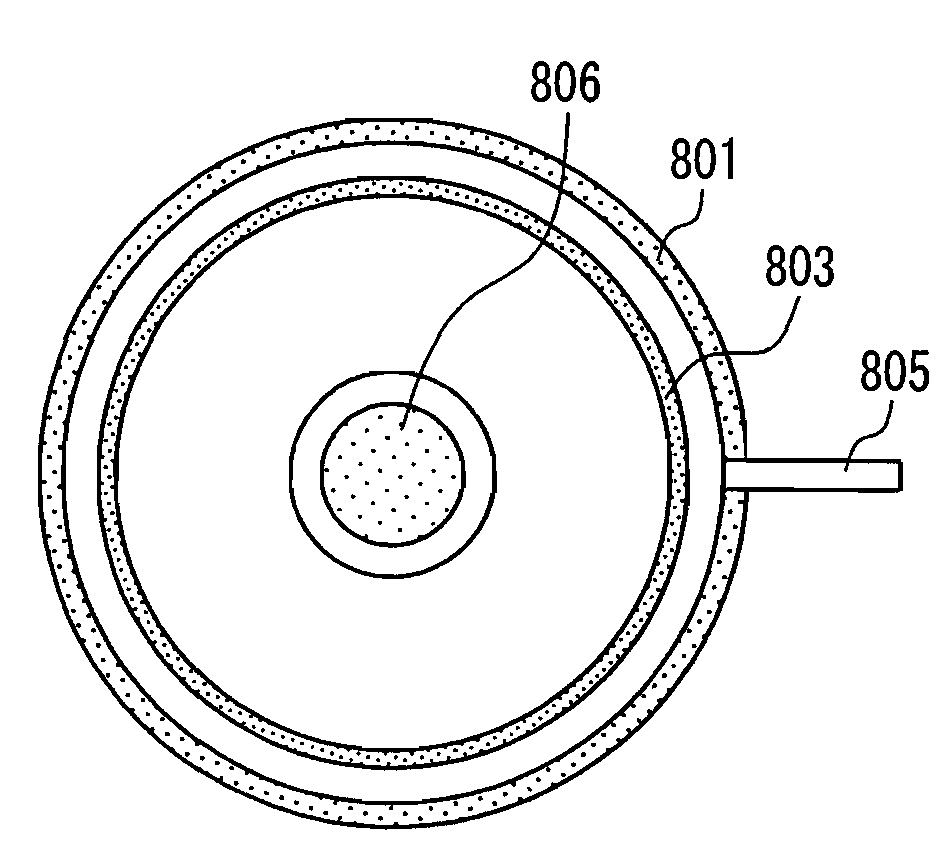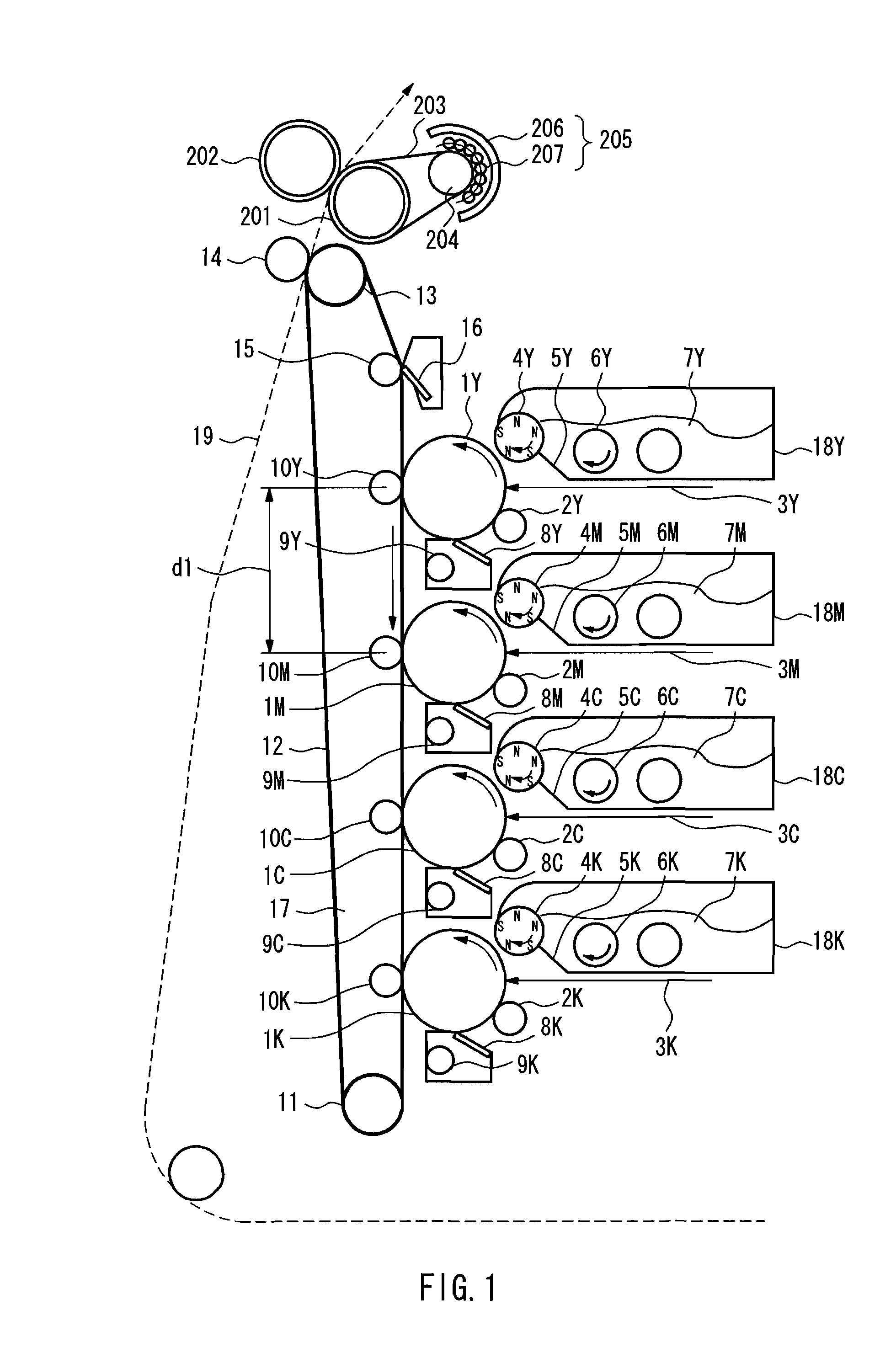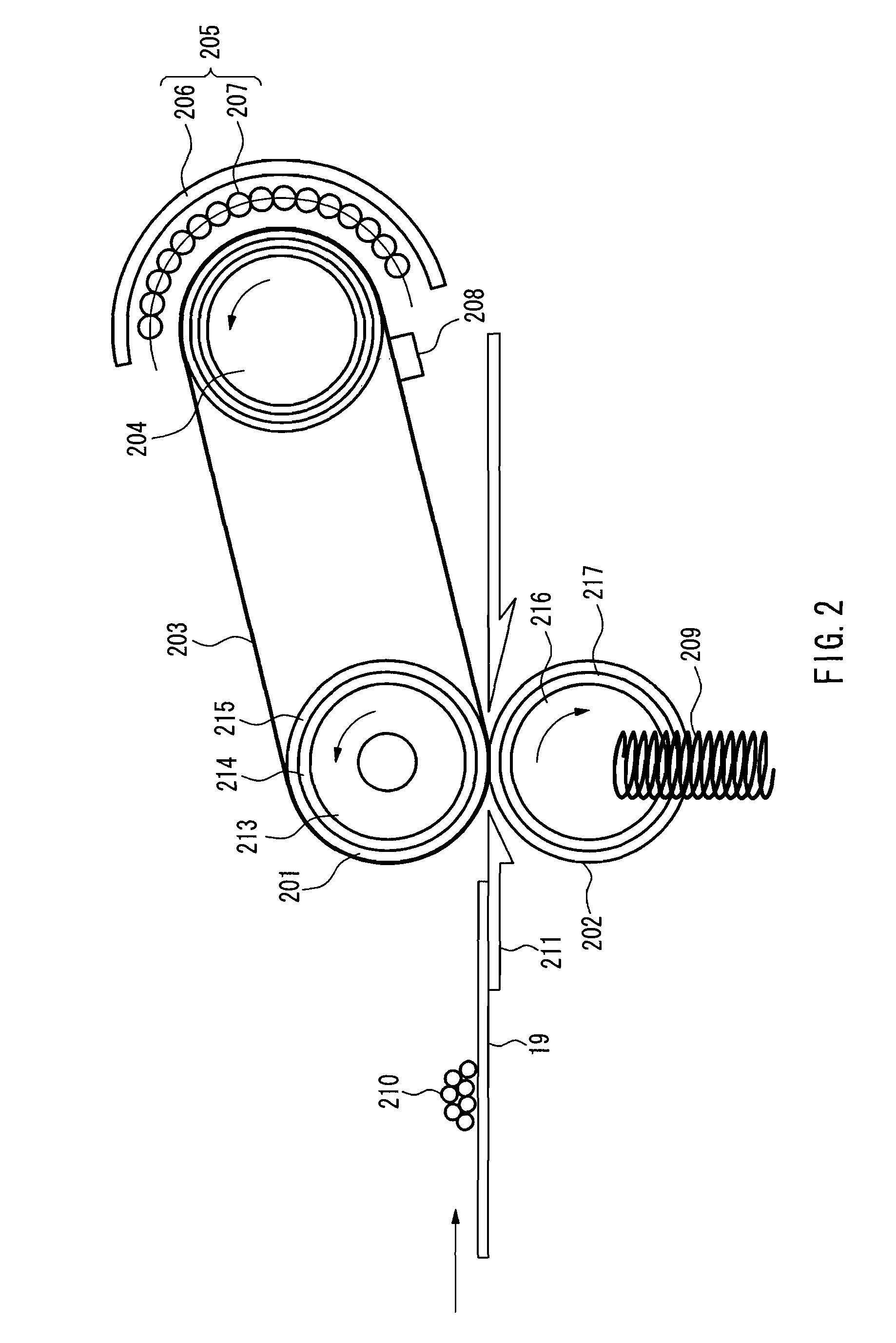Toner and Process for Producing the Same
a technology of toner and process, applied in the field of toner, can solve the problems of poor color reproduction, oilless fixing, poor transfer efficiency, etc., and achieve the effect of high transfer efficiency
- Summary
- Abstract
- Description
- Claims
- Application Information
AI Technical Summary
Benefits of technology
Problems solved by technology
Method used
Image
Examples
examples
(1) Example of Carrier Production
[0255]MnO (39.7 mol %), MgO (9.9 mol %), Fe2O3 (49.6 mol %) and SrO (0.8 mol %) were placed in a wet ball mill and then were pulverized for 10 hours and mixed. The resultant mixture was dried, kept at 950° C. for 4 hours, and temporarily calcined. The resultant was pulverized for 24 hours in a wet ball mill, and then was granulated and dried by a spray dryer. The granulated material was kept in an electric furnace at 1270° C. for 6 hours in an atmosphere having an oxygen concentration of 2%, and fully calcined. The calcined material was ground and further classified, thus producing a core material of ferrite particles that had an average particle size of 50 μm and a saturation magnetization of 65 emu / g in an applied magnetic field of 3000 oersted.
[0256]Next, 250 g of polyorganosiloxane represented by Formula (1) in which R1 and R2 are methyl groups, i.e., (CH3)2SiO2 / 2 unit is 15.4 mol % and Formula (2) in which R3 is a methyl group, i.e., CH3SiO3 / 2 u...
PUM
| Property | Measurement | Unit |
|---|---|---|
| endothermic peak temperature | aaaaa | aaaaa |
| melting point | aaaaa | aaaaa |
| melting point | aaaaa | aaaaa |
Abstract
Description
Claims
Application Information
 Login to View More
Login to View More - R&D
- Intellectual Property
- Life Sciences
- Materials
- Tech Scout
- Unparalleled Data Quality
- Higher Quality Content
- 60% Fewer Hallucinations
Browse by: Latest US Patents, China's latest patents, Technical Efficacy Thesaurus, Application Domain, Technology Topic, Popular Technical Reports.
© 2025 PatSnap. All rights reserved.Legal|Privacy policy|Modern Slavery Act Transparency Statement|Sitemap|About US| Contact US: help@patsnap.com



